Our Saints
Saint Gerard Majella
Saint Gerard, our school saint, has his feast day on 16th October.
Gerard was born in Muro, Italy, on 23rd April 1726, the youngest of five children. He trained as a tailor for four years following in his father’s footsteps. Then he became a servant for the local Bishop. He shared the money he earned between his mother and the poor.
Gerard could not join the Capuchin Order because of ill health but he was accepted by the Redemptorists as a lay brother. In his work with the Redemptorist community he served as sacristan, gardener, porter, cook and tailor.
During his life he was called the ‘wonder worker’ because so many miraculous things happened through his intercession. There are many miracles attributed to St. Gerard including restoring life to a young boy who had fallen from a high cliff.
Because of the miracles, God worked through Gerard’s prayers with mothers. The mothers of Italy took Gerard to their hearts and made him their patron.
Gerard died in 1755 at the age of 29.
Gerard was beatified in Rome on January 29, 1893, by Pope Leo XIII. He was canonised, and became Saint Gerard Majella, less than twelve years later on December 11, 1904, by Pope Saint Pius X.
Saint Gerard followed the teachings of Jesus all his life and shared the Good News by what he said and how he lived his life. We look to Saint Gerard to be an example for us to follow.
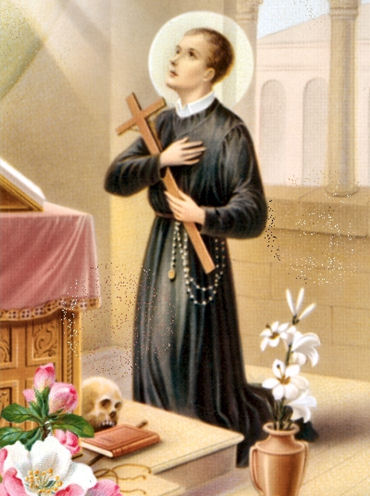
Saint Gerard
A Prayer to Saint Gerard
Almighty and Eternal God, we thank you for the gift of Saint Gerard, and the example of his life.
Because Saint Gerard always had complete faith and trust in you, you blessed him with great powers of help and healing. Through him, you showed your loving concern for all those who suffered or were in need.
You never failed to hear his prayer on their behalf.
Today, through Saint Gerard’s powerful intercession, you continue to show your love for all those who place trust in you.
And so, Father, full of faith and confidence, and in thanksgiving for all the wonderful things you have done for us, we place ourselves before you today.
Through the intercession of Saint Gerard, hear our prayers and petitions, and if it is your holy will, grant them.
Amen.
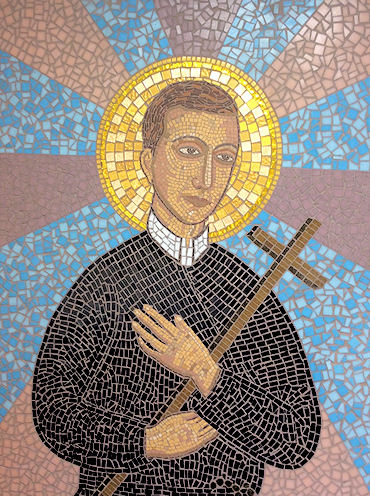
Our mosaic of Saint Gerard
House Saints
Each pupil across the school is assigned to a House Saint. We place siblings in the same house. Pupils are given the opportunity to earn house points by:
- Showing reverence in Mass.
- Standing back/holding doors open for adults.
- Showing good manners (please and thank you).
- Lining up smartly and sensibly.
- Walking sensibly and quietly around corridors on the left hand side.
- Completing homework/reading diary/spellings/tables.
- Showing good behaviour in lessons and assemblies.
- Playing nicely with our friends and looking after them.
- In house competitions (sports day).
- Trying really hard with work.
As part of the rewards system within St. Gerard’s, pupils are awarded housepoints for their respective house groups. Each week the House Captains have the important responsibility to collect the totals from each class. These are collated and totals are announced during Monday’s assembly. The house that collects the most house points throughout a term are rewarded by having a ‘non-uniform day’.
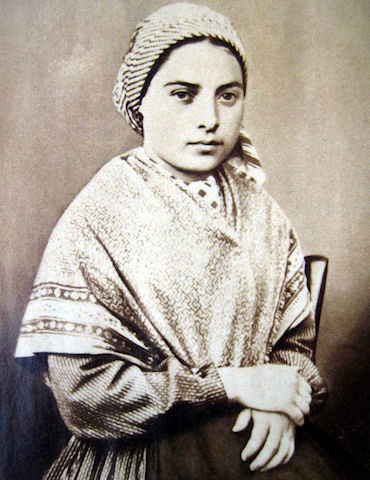
Saint Bernadette

Saint Maximilian Kolbe
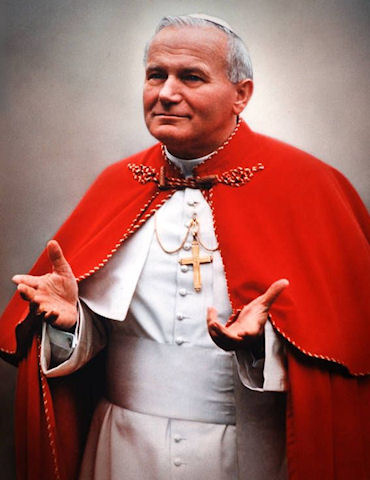
Saint Pope John Paul II
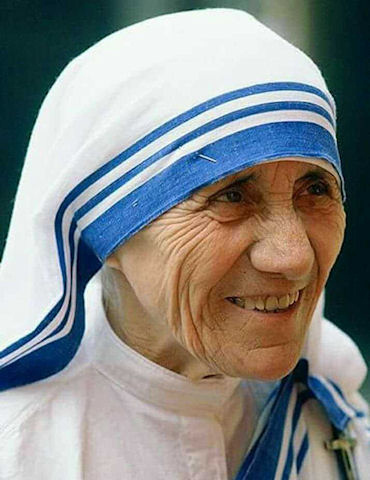
Saint Teresa of Calcutta
Saint Bernadette
Saint Bernadette was born in Lourdes, France. As a child gathering firewood, the Virgin Mary appeared to her seventeen times. Bernadette was urged to pray for sinners and to build a chapel on the site. The Virgin Mary asked Bernadette to dig into the mud and a spring developed. Many healings have been attributed to this water and it is still there today. When she got older, Bernadette became a nun and passed away at age 35.
Saint Maximilian Kolbe
Saint Maximilian Kolbe was born in Poland in 1894. He was a Franciscan Friar. He was the founder of the ‘Immaculata Movement’, which is devoted to Our Lady. While imprisoned in Auschwitz by the Nazis, ten men were chosen to die as a punishment for a prisoner escape. He offered himself in place of a young husband and father. He was the last of the ten to die after enduring two weeks of starvation, thirst and neglect.
Saint Pope John Paul II
Pope John Paul was born in 1920 in Poland. He was a beloved Pope and served in this position for 26 years. As Pope, he travelled to 129 countries spreading the word of God. He was fluent in 13 different languages, was a fantastic goalkeeper and survived two assassination attempts.
Saint Teresa of Calcutta
Saint Teresa, known affectionately as ‘Mother Teresa’, was born in Macedonia in 1910. When she was 12 years old, she knew that she would commit herself to a religious vocation so when she turned 18; Agnes left home and joined the Sisters of Loreto in Ireland. In 1931, she became a nun and whilst in India on a retreat she realised what her true calling was: “I heard the call to give up all and follow Christ into the slums to serve him among the poorest of the poor.” Mother Teresa dedicated her life to her calling and continued her work with the poor for the rest of her life, leading the Missionaries of Charity until just months before her death on 5 September 1997.
Class Saints
All of our classes are dedicated to a particular saint, as follows:
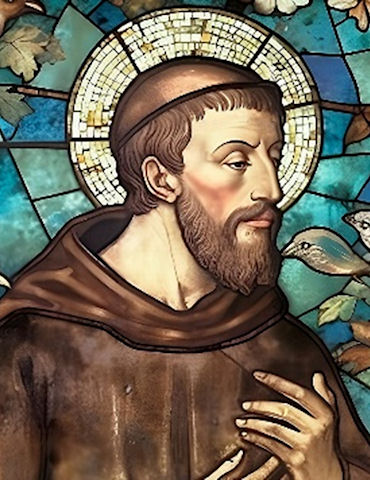
Saint Francis of Assisi - Nursery
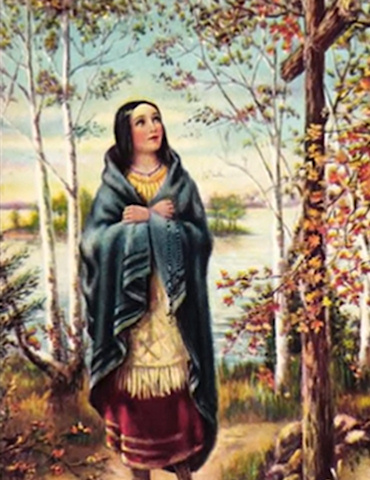
Saint Kateri Tekakwitha - Reception
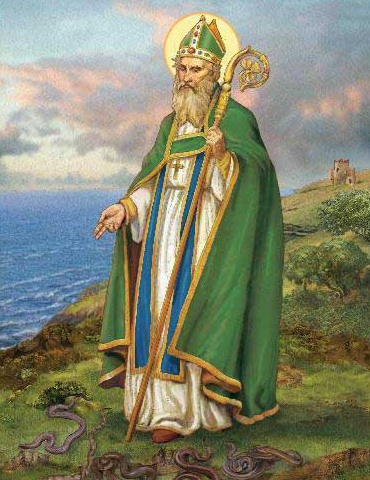
Saint Patrick - Year 1
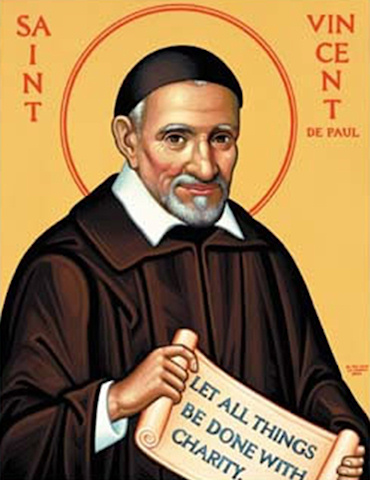
Saint Vincent - Year 2
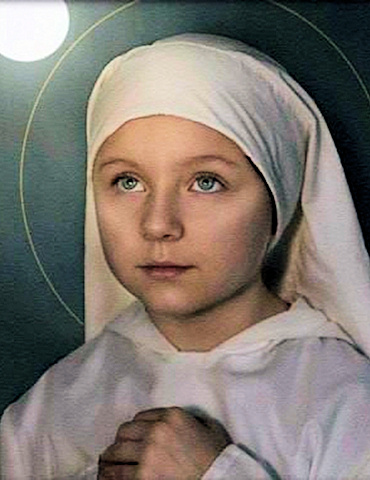
Blessed Imelda Lambertini - Year 3

Saint José Luis Sánchez del Rio - Year 4
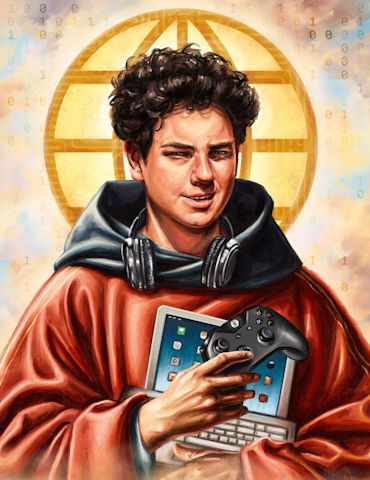
Saint Carlo Acutis - Year 5
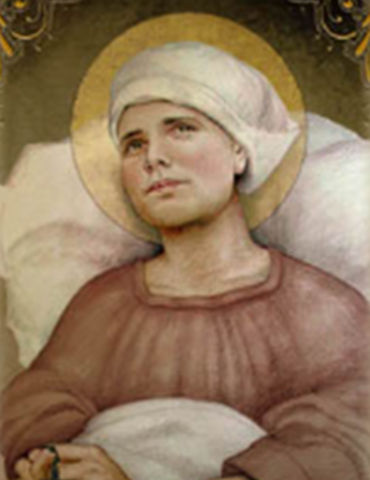
Saint Lidwina of Schiedam - Year 6
Saint Francis of Assisi – Nursery
Saint Francis of Assisi is one of the patron saints of Italy. He was particularly well known for his love of animals and nature. Francis was born in Assisi, Italy in 1181. He had a privileged upbringing. He briefly became a soldier but then after an illness he went on a pilgrimage to Rome. On his travels, he witnessed a great deal of poverty and returned home a changed man. He decided to live a life following God. He repaired ruined churches as he travelled across Europe and the Middle East spreading the word of God. He called all creatures his ‘brothers and sisters’. While preaching, birds are said to have gathered around him. Francis died in Assisi in 1226. His feast day takes place on 4 October.
Saint Kateri Tekakwitha – Reception
Saint Kateri , known as the Lily of the Mohawks is a beautiful example of courage. She did not have an easy life. Her name meant “she who bumps into things” because her poor eyesight made her clumsy. Kateri was inspired by the teachings of the Jesuit priests. Kateri was treated as a slave by her tribe and was shunned because of her beliefs. She left her village and moved to Canada where she spent the last five years of her life living as a Catholic. Kateri died on April 17th, 1680 at the young age of twenty-four. Witnesses say that when she died, the scars from her smallpox disappeared and she was more beautiful than ever. Throughout her life, Kateri was known for her virtue, patience, and modesty. She is the patron Saint of Ecology and the environment.
Saint Patrick – Year 1
St Patrick was born in Britain, but when he was a boy, he was taken to Ireland as a slave. Even though this was a very hard time, Patrick never lost his faith in God. After six years he escaped and returned home, but later he bravely went back to Ireland as a missionary to share the Good News of Jesus. He taught people about God in simple ways they could understand – the most famous story tells how he used the shamrock to explain the Holy Trinity: Father, Son, and Holy Spirit. St Patrick inspires Year 1 to be strong, brave, and faith-filled, just as he was. Like him, we try to trust God, even when things are difficult, and to share God’s love with others.
Saint Vincent – Year 2
St. Vincent de Paul was a French priest known for his deep compassion and tireless service to the poor. Ordained in 1600, he worked in Paris with the guidance of Cardinal Pierre de Bérulle and soon dedicated his life to helping those in need. In 1625, he founded the Congregation of the Mission (Vincentians) to preach in rural areas and train priests. He also organised groups of laypeople to care for the sick poor, and in 1633, he co-founded the Daughters of Charity, one of the first communities of women devoted to serving others outside a convent. Canonized in 1737, St. Vincent is remembered as the patron saint of charitable works. His legacy of kindness and practical service inspired the later founding of the Society of St. Vincent de Paul, which continues to serve people in need around the world today.
Blessed Imelda Lambertini – Year 3
Blessed Imelda Lambertini loved Jesus very much, just like us. She wanted to receive Holy Communion, but in her time children had to wait until they were older. Imelda prayed with all her heart, and when she was only 11 years old, a miracle happened. Jesus came to her in the Eucharist! She is remembered for her deep love of the Blessed Sacrament and is the patron saint of First Communicants. Year 3 chose her as our class saint because this is our Holy Communion year, and she reminds us how special it is to receive Jesus in the Eucharist
Saint José Luis Sánchez del Rio – Year 4
Saint José Luis Sánchez del Rio is a Mexican saint, canonized on October 16th 2016 by Pope Francis. Although José was young and died as a martyr at age 14, he was a powerful example of youth, bravery, and faith. José loved his faith and grew up with a strong devotion to Our Lady of Guadalupe. When José was twelve years old, the Cristero Wars began in Mexico. During this period in history the Mexican government attempted to extinguish the influence of the Catholic Church throughout the country. Even though he was too young to join the rebellion, José desperately wanted to be a Cristero and stand up for his faith. He was eventually allowed to join the effort as a flag bearer. During a battle José was captured and was asked to deny his faith and the Cristero cause. José refused and was tortured terribly. Refusing to renounce his faith angered the government soldiers so much that they cut off the bottom of his feet. As José was forced to walk through town, he recited the rosary, prayed for his enemies, sang songs to Our Lady of Guadalupe, and proclaimed, “Vivo Cristo Rey!” meaning, “Long live Christ the King!”. We celebrate the feast day of Saint José on February 10th and pray for his intercession on behalf of all persecuted Christians, children, and the people of México.
Saint Carlo Acutis – Year 5
Carlo Acutis was an English-born Italian computer programmer. He was beatified in 2020, after he was attributed with his first miracle- healing a Brazilian child of a congenital disease. Pope Francis cleared the way for Carlo Acutis to be made a Saint by attributing a second miracle to him in May 2025. Although Carlo died young (aged 15 in 2006), he is considered a powerful example to young people of how we can follow Christ and is the first Millennial Saint. We celebrate his feast day on October 12th and pray for his intercession for all of our needs. “Always to be invited with Jesus, that is my life’s program.”
Saint Lidwina of Schiedam – Year 6
Saint Lidwina of Schiedam (born 1380, died 1433) is the patron saint of her hometown, Schiedam, patron for people with long-term pain and for ice skaters. Many people believe Lidwina was one of the first known cases of multiple sclerosis. When she was 15, she had a bad fall while ice skating. This accident caused her to become more and more disabled. She fell and broke a rib. This injury changed her life forever. She often went without food and became known as a healer. Writers from her time said that Lidwina became paralyzed. Only her left hand could move. They also wrote that parts of her body seemed to fall off. Blood would come from her mouth, ears, and nose. After her accident, Lidwina began to fast often. This means she went without food for long periods. She soon became famous as a healer and a holy woman. Officials from Schiedam even wrote a document about her. It said she went without food or sleep for a very long time. At first, she ate tiny bits of apple or date. Later, she drank only river water. This water was sometimes salty from the tides. Lidwina was also known for helping others. People said she could make food multiply. This meant there was always enough food for those in need. She died when she was 52 years old. After she died in 1433, her burial place became a popular spot for people to visit.

